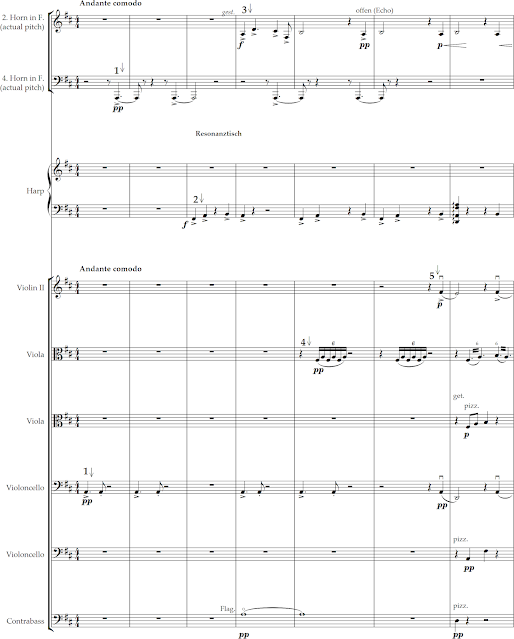CXXIII. MAHLER, Gustav (1860-1911)
Yesterday, we showed you why he kept putting off writing a "Ninth."
Depsite his heart problems, he wrote to friends that he was feeling better and set out to conquer the "Curse of the Ninth."
This symphony is completely different from the previous eight (or nine, if you count yesterday's entry).
Anticipating composers like Alban Berg, Mahler plants all the sapling seeds on the very first page of the score. It will grow from these initial motifs -- or cells -- into a giant redwood in the following 90 or so minutes of this gargantuan, powerful symphony.
Let's take a look at them. They are marked in the score with large numbers and an arrow:
- The irregular-heartbeat motif. It begins in the celli and a moment later -- off the beat -- in the fourth Horn.
- The minor third/major second motif in the bass register of the harp (it will later drive the rich development in Mahler's musical language).
- Emphatically played by the 2nd Horn, the fourth/fifth motif which will be continually developed.
- The short, anxious sextuplet tremolo in the violas; and finally
- The dominating motif of the entire symphony -- which sounds like a quiet sigh -- which appears in Bar 6 in the second violins.











No comments:
Post a Comment